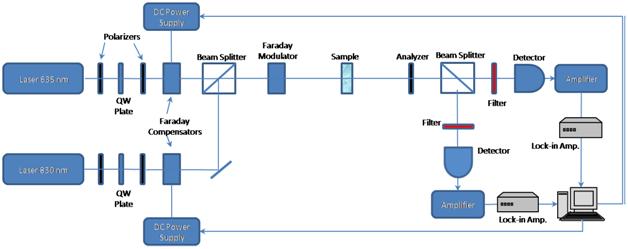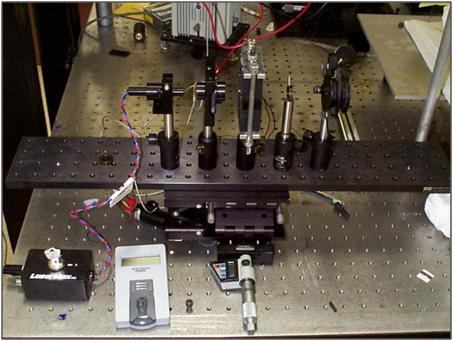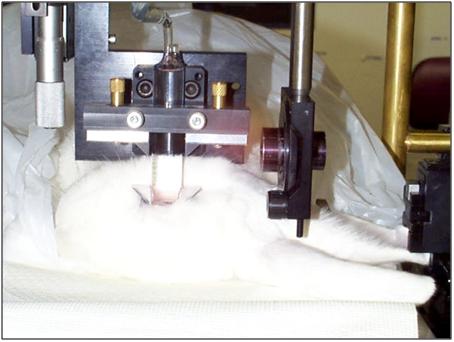Optical Polarimetry for Glucose Sensing
Background
Polarized light refers to light whose electric field oscillates
in a particular way - examples include planer, elliptically, or
circularly polarized light. The use of polarimetry for glucose detection
has existed for several years primarily for use in the sugar industry.
The equation which describes the phenomenon of polarimetry is
given by:
![]()
where [α] is the specific rotation at a given wavelength (λ), α is the observed rotation, C is the concentration of optically active sample, and L is the sample path length.
As can be seen from this equation, the concentration of the solute of interest is directly proportional to the observed rotation in polarization. Thus, the concentration of an optically active compound can be calculated if we can determine the observed rotation of polarization for the light beam passing through the sample.
In our research, we utilize this fundamental concept toward the development of a polarimetric system for noninvasive glucose detection in the human body.
Experimental Setup
The ability to monitor the low levels of glucose typical in the body (in vivo) using polarimetry requires very sensitive instrumentation. The pictures below illustrate the set up used in our laboratory for the in vitro experiments:
 |
| Experimental setup of the polarimetric system (1) |
The in vitro experiments were primarily focused on glucose doped
water solutions. Currently we are proceeding with in vivo studies
employing rabbit model.
 |
 |
|
Setup of the in vivo experiments (2) |
References:
(1) Malik, B., and Coté, G., “Real-time dual wavelength polarimetry for glucose sensing” Proc. SPIE, Vol. 7186, 718604 (2009).
(2) Cameron, B., “The Application of Polarized Light to Biomedical Diagnostics and Monitoring,” Ph.D. Dissertation, Texas A&M University, College Station, TX 77843, (2000).
For more information, contact Bilal Malik
Department of Biomedical Engineering | Dwight Look College of Engineering | Texas A&M University